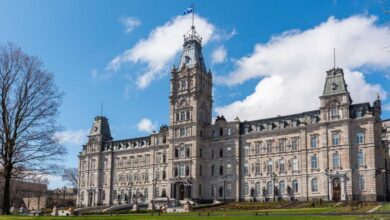Highest Annual Canada Population Growth Rate Since 1957

Canada has recorded its highest annual population growth rate since 1957, so that it now has 40,769,890 inhabitants – an increase of 1,271,872 people compared with January 1, 2023.
The vast majority of that 3.2% population growth rate stemmed from temporary immigration in 2023, without which (relying solely on permanent immigration and natural increase) the growth rate would have been roughly three times less (+1.2%) than its current level.
International migration (temporary and permanent immigration) led to the majority (97.6%) of Canadian population growth, while the rest (2.4%) came from natural increase. This also corresponded with a 0.6% quarterly change.
StatsCan collaborates closely with IRCC and other federal departments to estimate the number of non-permanent residents (NPRs) living in Canada.
Last year, 471,771 permanent immigrants came to Canada, a number which fell within range of the immigration department’s levels targets.
Read More Canada Immigration News
Canada Welcomes Growing Numbers Of Ukrainians As CUAET Deadline Looms
Trudeau Refuses Quebec’s Request For Full Power Over Immigration
Start Of 2024 Sees Canada Spousal Sponsorship Immigration Slow
Permanent immigration was up compared with a year earlier in every province and territory other than Nova Scotia and Quebec.
A further 804,901 non-permanent residents (NPRs) joined Canada’s population in the same year. This was the second year that temporary immigration caused a rise in population growth and the third year in a row with a net rise in NPRs.
Most of them were NPRs working as workers in response to federal, provincial, and territorial labour market needs of 2023, followed by international students. Just more than 1 in 10 NPRs were asylum claimants (with or without work or study permits).
Every province and territory except Newfoundland and Labrador saw a year-on-year increase in the net number of NPRs in 2023.
It is estimated that 2,661,784 NPRs were in Canada on January 1, 2024. Among them, 2,332,886 were permit holders and their family members living with them, and 328,898 were asylum claimants (with or without work or study permits).
Watch Video
The fourth quarter of 2023, from October 1 to December 31, was underlined with a strong population growth of 241,494 people (+0.6%). During this time, Canada welcomed 100,472 PRs, with provinces reporting higher year-over-year immigration levels.
This was the highest growth rate in a fourth quarter since 1956 (0.7%).
Quebec experienced a decrease in new immigrants by about half, from 16,188 in the fourth quarter of 2022 to 8,627 in the fourth quarter of 2023.
From October 1, 2023, to January 1, 2024, the number of NPRs increased by 150,347, which was a rise for the eighth quarter in a row.




